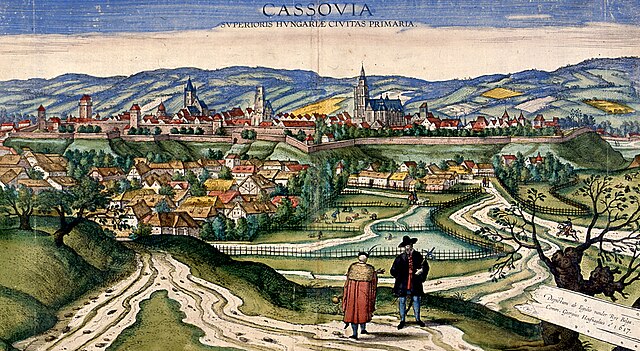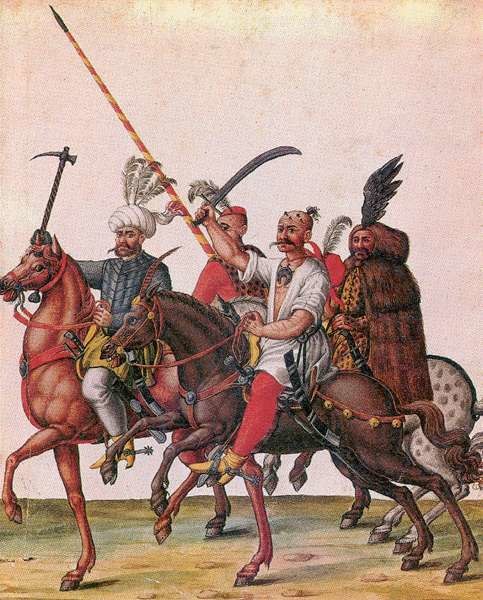Upper Hungary is the usual English translation of Felvidék, the Hungarian term for the area that was historically the northern part of the Kingdom of Hungary, now mostly present-day Slovakia. The region has also been called Felső-Magyarország.
"Cassovia: Superioris Hungariae Civitas Primaria", the prospect from Civitates orbis terrarum. Cassovia (German: Kaschau, Hungarian: Kassa, Slovak: Košice), the "capital" of Upper Hungary in 1617.
The Ottoman–Habsburg wars were fought from the 16th to the 18th centuries between the Ottoman Empire and the Habsburg monarchy, which was at times supported by the Kingdom of Hungary, Polish–Lithuanian Commonwealth, and Habsburg Spain. The wars were dominated by land campaigns in Hungary, including Transylvania and Vojvodina, Croatia, and central Serbia.
"The Great Gun" (1518), an allegorical representation by Albrecht Dürer of the Turkish menace for the German lands
Ottoman sultan Suleiman the Magnificent in 1530, by Titian.
The Ottomans were unable to overcome the long pike formations and arquebus fire of the defenders in the siege of Vienna (1529)
The Ottoman army consisted of both heavy and missile fire, cavalry and infantry, making it both versatile and powerful.





